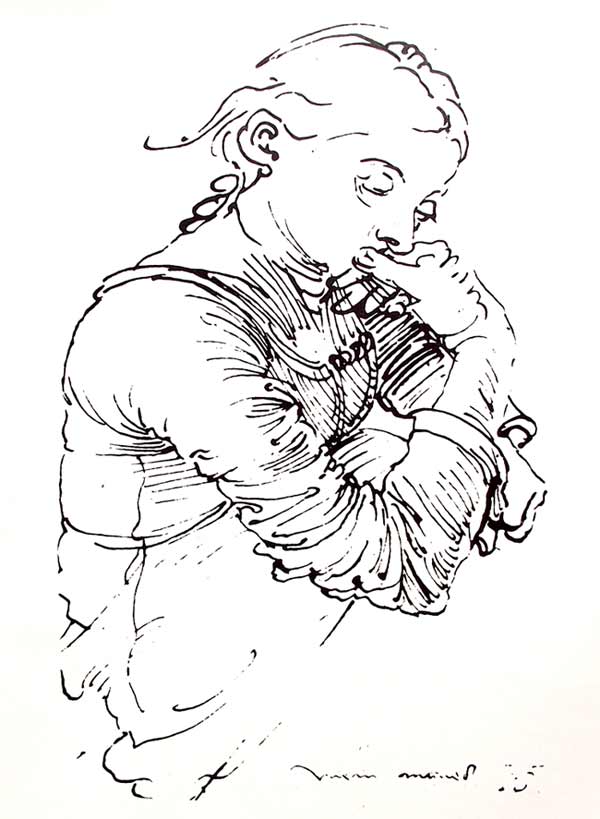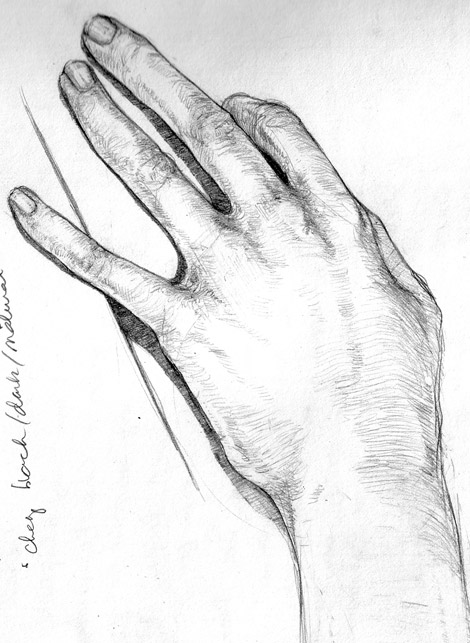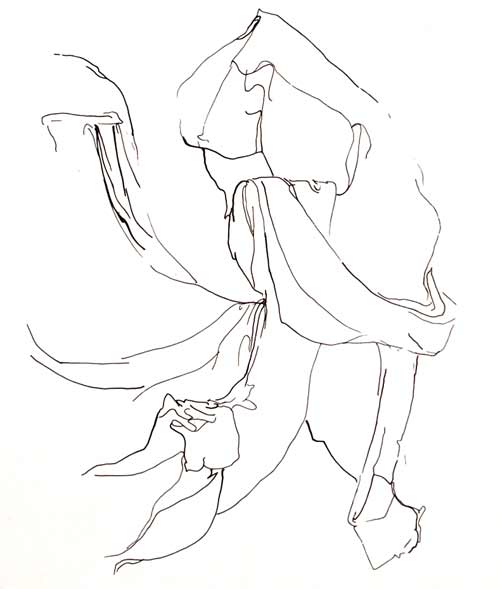There are three classic types of creative drawing: Lineal art o drawing, gesture drawing and modeling. In this post I will discuss the issue of line drawing, created with the work of lines.

Above drawing by Albrecht Dürer. Distribute the lines in place, more in the clothes, less in areas of light. Perfect fit with agile work.
When we need to learn to draw more and better, it’s best to use more creative drawing techniques. Begin to see differently and look for the picture with other forms of drawing. And even develop a personal style.
The line drawing
The art of drawing takes practice and patience. As you might take hours. With haste we can not concentrate on the task. In addition, we can not draw something very difficult from the beginning, otherwise it will be better to start with easy subjects.
How to know if a subject is more or less difficult?
In drawing, if the image has few clear benchmarks, more difficult it will be to draw it. That is, the drawing is made with measurements in space we are taking with our view and sometimes aids such as grids or rules. If the points are merely visual aids like a grid line, if curved, sloped and imbalances, then the light will cost more. The issues with lines as a simple building can be easier to draw through the order or structure they have. The view is not so tired measuring the space between shapes.
Therefore, the first thing we always do before daring with a drawing, it will be observed well the model. We will look the points that can serve as a visual support and we will use those points to measure the placement of other elements.
One way to learn to see better the model is to produce a line drawing of the subject. We draw the basic external contours, this way we represent the shape and volume of the basic model. We reproduce the feeling of three dimensions with very few visual elements, only with lines.
The line art requires that we focus on the shapes we have in front of our eyes, literally caress the profiles with our eyes while drawing without losing the view of the model.This requires paying much attention to the issue, since it requires to see even the smallest detail and simplify the drawing.
Easy drawing example
The hand:

Difficult drawing
Examples of linear works more elaborate and highly accurate can see the works of Ryuji Ohtani
Practice creative line drawing:
1- The blind technique of drawing
You can try to draw without looking at the paper, looking only to the model. Is drawn line by line without worrying about the inevitable distortions, or trying to do a good job, since it is a mental and visual exercise. It is a good way to learn to see the ways keeping an eye on the model and the mind moves the pencil on paper.
2 – Draw with the left hand (or contrary to usual)
Requires developing the ability to caress the forms. Besides being fun to sometimes see how the work is more expressive, perhaps for the extra effort of our hand.
Other suggestions
– Draw only the profiles that help to define the form and not those who can less attractive.
– Making large works by ensuring that the picture fills the entire page. (For example, 100cm x 80cm sheets of paper roll).
– Confer expression to varying line pressure, the rate and speed with which the tool handles drawing.
Exercice of line drawing

Tissues with pleats: extienda una tela sobre el respaldo de una silla colocando los pliegues al gusto.
Realice con lápiz, bolígrafo o rotulador un dibujo esquemático de las líneas.
Como objetivo hay que desarrollar la capacidad para percibir las formas tridimensionales. Esforzándose en observar bien para expresar más con el dibujo de línea y así no trazar la línea equivocada.
With pleats : stretch a tissue on a chair´s back placing folds as you like.
Drawing with pencil, pen or marker a schematic drawing of the lines.
As a goal, develop the ability to perceive three-dimensional shapes. Striving to create the exact lines and then express more with less lines.
* Remember: line drawing attempts to create the image with the minimum number of lines but with shapes and exact placement.


